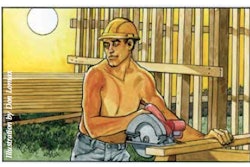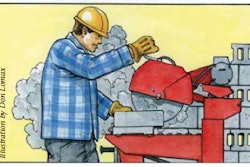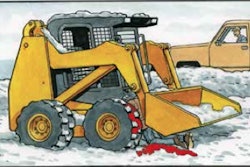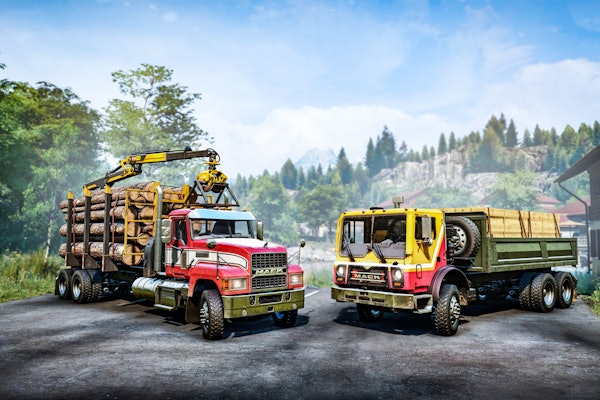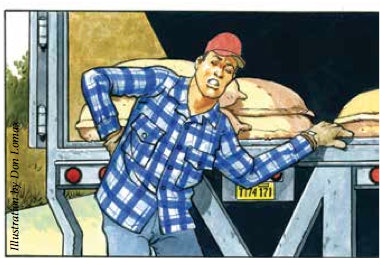
Bending at the waist rather than the knees is a common mistake. Instead, approach the task from a stable position – feet shoulder width apart, back straight, shoulders square – and keep the weight close to your body. Bend your knees in order to reach the object, and use your leg muscles to raise your torso. Don’t reach forward, overhead or behind your back. “It’s the odd twisting, reaching positions that are likely to cause injury,” Neely says.
Doing a few quick stretches before working can prevent back injuries as well. Many muscle groups attach to the pelvis, and when these muscles are tight they cause the pelvis to tilt, putting the back in an unstable position, Neely says. The hip flexors, quadriceps (front of thigh), hamstrings (back of thigh) and several back muscles attach to the pelvis.
Back pain associated with landscaping work often results from lumbar strains and sprains, in which muscles are inflamed or slightly injured through overuse or overextension. If you experience low-grade, localized back pain, Neely says you should rest your back to allow the muscles to heal, apply ice to the area (or heat if you don’t tolerate cold) and do gentle stretches. See a physician if pain persists longer than two days.
Disc herniations occur when spinal discs – the soft cushions between vertebrae – are pushed outside their normal position. When this happens, the disc often pinches spinal nerves. Any time back pain extends into your legs or is accompanied by numbness or tingling in your legs or feet, avoid the urge to “grin and bear it,” Neely says. Working through the pain puts you at risk of additional injury and further irritates the pinched nerve or nerves, prolonging recovery time.
Warm-up stretches
- Quads – Standing, pull leg back (heel to buttocks), keeping hip neutral.
- Hamstrings – Sitting, place one foot on step, wall, etc. (about 18 inches high), keeping knee straight. Bend forward at hip, keeping back straight.
- Hip flexors – Place one leg on step or wall and lunge forward slightly while lifting opposite arm.
